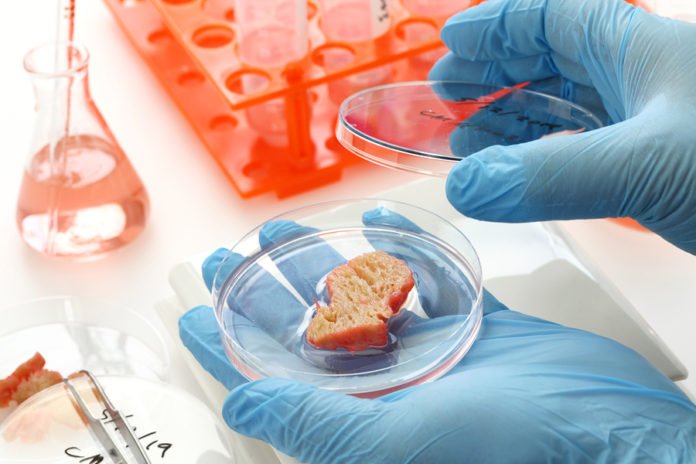
Using technologies that exist today, what meat alternatives can be created? That’s the question a new report from PreScouter addresses. The report identifies key drivers and technologies in the meat alternative space and provides examples of commercially available products and academic research.
Driving the development of alternatives to meat from animals is consumer desire for “healthy, low environmental impact, ethical, cost-effective, and new food products,” according to the report. Concerns about the effects of meat production on the climate, the treatment of animals, feeding a growing population, and the health effects of eating meat all feed into the push to develop alternatives.
The report notes that although a vegetarian/vegan approach to eating has increased, it still represents a very small percentage of the population in most countries. The exception is countries like India, where vegetarianism has a long cultural history and 40% of the population is vegetarian. “Meat substitutes represent an alternative for people who wish to continue eating meat but wouldn’t mind having a product that doesn’t come from an animal,” states the report.
The report looks at three types of meat alternatives as the most viable given current technology: Plant-based meat analogues, 3D printed meat analogues, and cellular agriculture.
Plant-based meat analogues
Plant-based meat analogues are the most common meat alternatives currently available. Impossible Foods, Beyond Meat, and other plant-based meat companies are quickly bringing more options to consumers.
Through the use of high-moisture extrusion cooking, meat analogues have a texture similar to meat. In the thermomechanical process of extrusion, a combination of pressure, heat, and mechanical shear plasticize moist, protein-containing plant materials and push them through a die. The process creates a product with a similar appearance and mouth feel to cooked meat.
3D printed meat analogues
3D printed meat analogues are still in the development process. By combining 3D printing technology, digital modeling, and plant-based food formulations, the goal is to use 3D printers to create meat analogues with muscle fibers that mimic those in meat.
Astronauts on the International Space Station recently 3D printed meat using materials from Adelph Farms of Rehovot, Israel. Redefine Meat of Tel Aviv, Israel, currently has one small 3D printing machine that makes about two pounds of meat an hour. Novameat of Barcelona, Spain, is still developing its technology.
Cellular agriculture
Cellular agriculture uses a combination of biotechnology, tissue engineering, molecular biology, and synthetic biology. The goal is to create real meat that is the same as livestock meat.
So far, no products are on the market, though in 2013 Mosa Meat of The Netherlands unveiled the world’s first hamburger made by growing cow cells in a lab. Other companies working in this area include JUST Meat and Finless Foods (both U.S.-based). A research group supporting the development of lab-grown meat is the New Harvest Research Institute.
Download the full report here: https://www.prescouter.com/inquiry/meat-alternatives-2019/.









